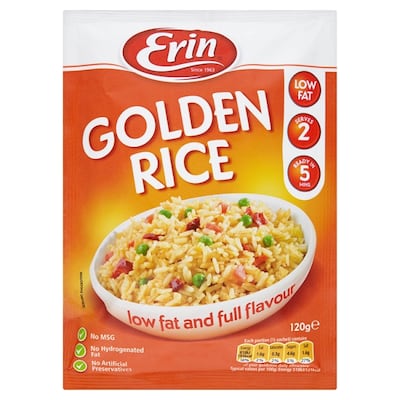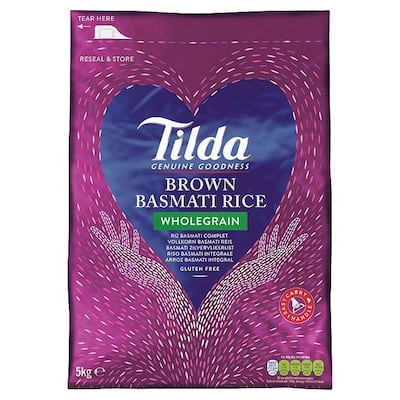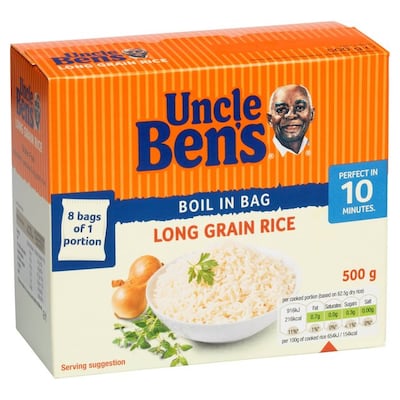One of my first serious roles in life was as an English teacher in Hong Kong. Of all the cultural interpretation I had to do, explaining the role of rice in Irish homes was problematic.
“Do Irish people eat rice?” I was asked regularly.
“Oh yes, we love it. With sugar and milk. Or cream.”

My students were too polite to tell me what they thought of that, but I could see the horror in their eyes. Rice was to them as potatoes are to us: impossible to imagine as a creamy dessert. Worse still, the best one came out of a can.
Creamed rice pudding is still available in tins and cartons, but it now shares the shelves with a wide selection of savoury options. These run from simple 1kg bags to pouches, sacks and packets of readycooked at a vast range of price points. You can pay anything from less than €1 to more than €16 per kilogramme.
This means the cooked convenience products cost more than 16 times the price of the basic foodstuff.

The most expensive product was a pouch of Erin’s Golden Quick Rice. One packet costs €1.90 and has 120g in it. With this, you are paying for the convenience as it takes just five minutes to prepare. You can reheat it in a microwave or on a stove.
The front of the packet announces it has no hydrogenated vegetable fat, but then you would struggle to find that in any supermarket product these days. It’s also “low fat and full of flavour”. Rice, of course, is naturally very low in fat, but vegetarians should note that some of the flavour in this packet comes from chicken fat.
It also has wheat flour, which is annoying for coeliacs as rice is one cheap cereal they can have. It is also why some brands now say “gluten-free” on the front. It’s not a given.
The madness of serving sizes is evident when you see that this 120g packet is supposed to have two servings. Compare that to Tilda’s speedy Brown Basmati in a similar pouch. One packet costs €2.10 for 250g, which is also regarded as two servings. So it’s almost twice as big for a few cents more. It is pre-cooked too and takes just two minutes to heat up.

Real value
For real value, take the time to cook the rice yourself. Although a 1kg bag of Tilda’s wholegrain brown basmati rice looks expensive at €5.99 when you see it on the shelf, it works out at less than half the price of the ready-cooked rice. Better yet, a 1kg bag of Aldi or Lidl wholegrain brown rice costs closer to €2.
There isn’t often much to see on the labels of regular rice aside from what type it is. With those, the name is often a giveaway, such as long grain or short grain. Long grain is simply longer than the other varieties.
Basmati is a type of long-grain rice from parts of India and Pakistan. The name means “fragrant” and it commands a premium, as does jasmine rice, as they are believed to have a better aroma than other types. Arborio rice is starchier so it is used for risotto.
Then it comes down to white or brown. Brown rice, which is also known as wholegrain, is subjected to minimal milling to remove the husk but keep the bran layer. So it retains more vitamins, minerals and fibre than regular or easy cook white rice, according the Rice Association. That bran outer layer gives it a nutty flavour, but it takes longer to cook at about 25 minutes.
White rice has had the outer layer removed – and with it some of the nutritional value – making it faster to cook. Most of the packets of white rice on sale now take just 10 minutes. This is the case with Uncle Ben’s Boil in Bag long grain rice for example. That’s because they have been “parboiled”. This process involves steaming the rice under pressure before milling. It hardens the grain and helps to reduce the possibility of overcooking.

Red rice and black rice are simply a different variety, though some believe black rice is healthier. Wild rice isn’t rice at all. It just looks like it.
You will notice that some packets, such as the Aldi wholegrain rice, say, “Don’t reheat”. That’s because rice needs to be cooled very quickly and reheated to a high temperature to kill any lingering toxins and avoid food poisoning. Or cool it quickly and don’t reheat it. Better safe than sorry.
You won’t have that problem with a tin of Ambrosia.
FOOD LABELS SERIES
- Bread
- Soup
- Crisps
- Sliced ham
- Cream crackers
(search other food labels articles here)








